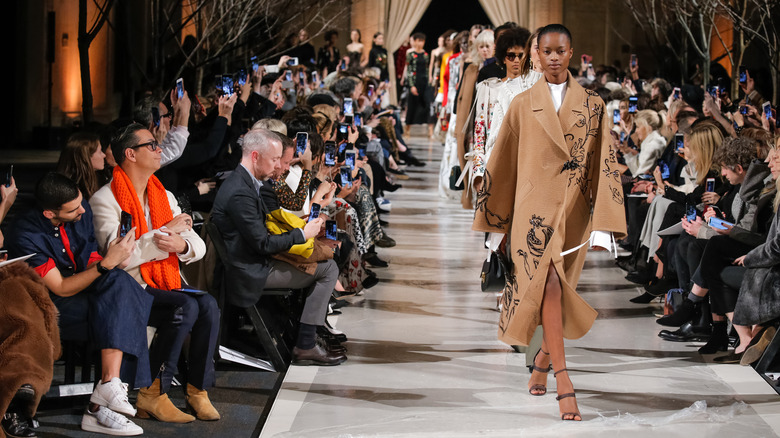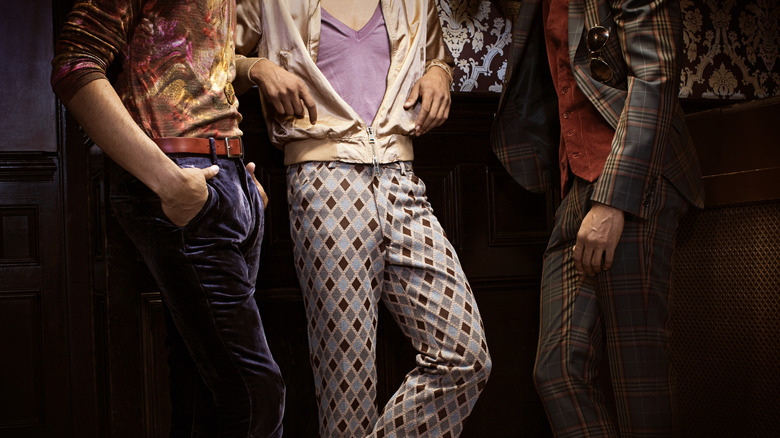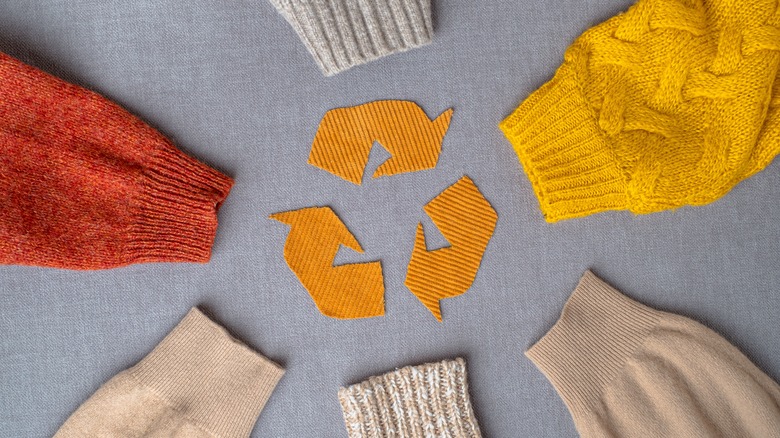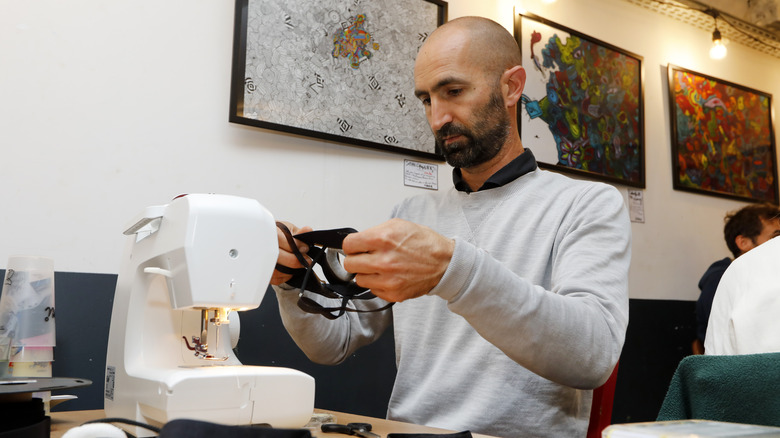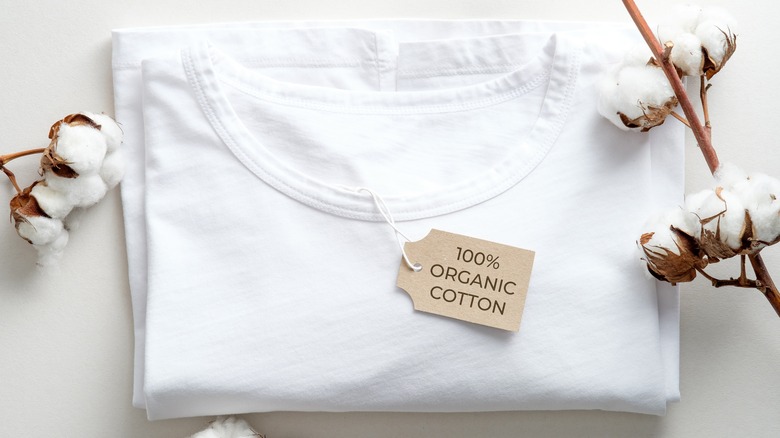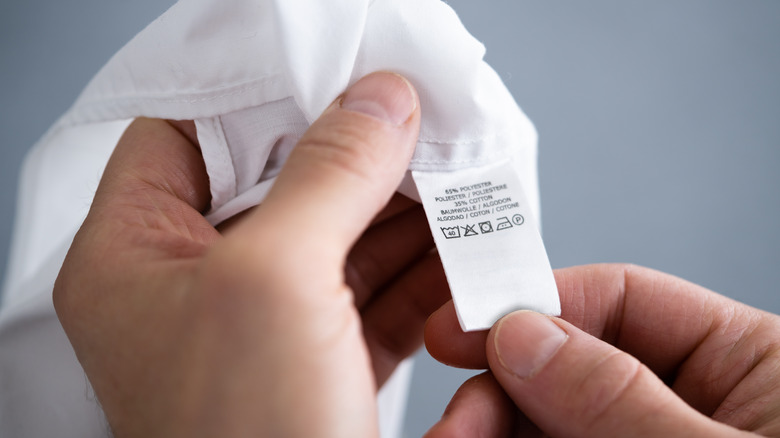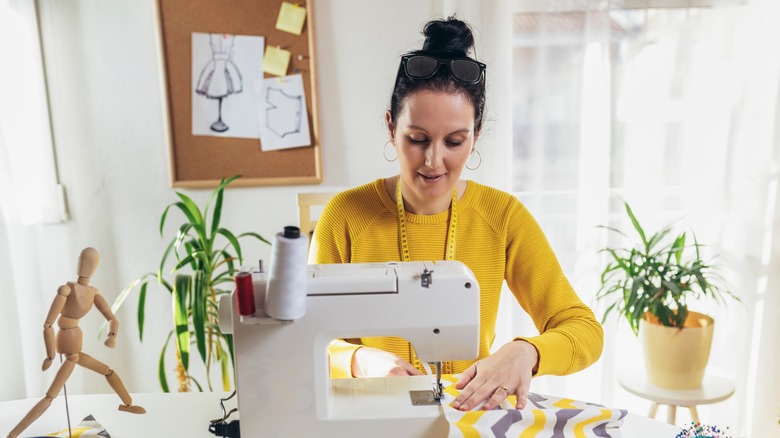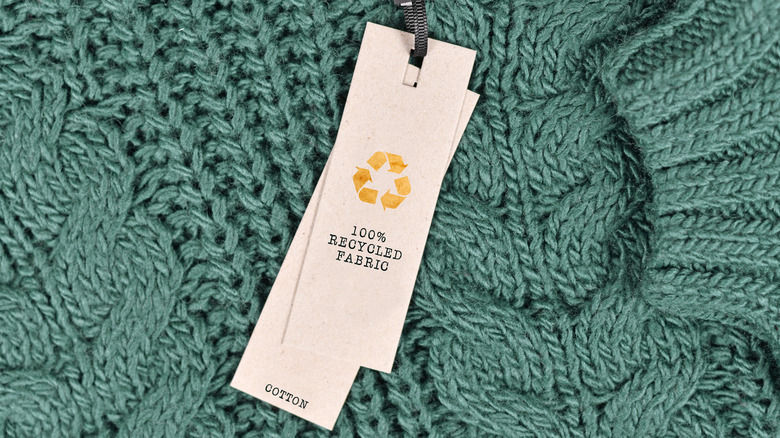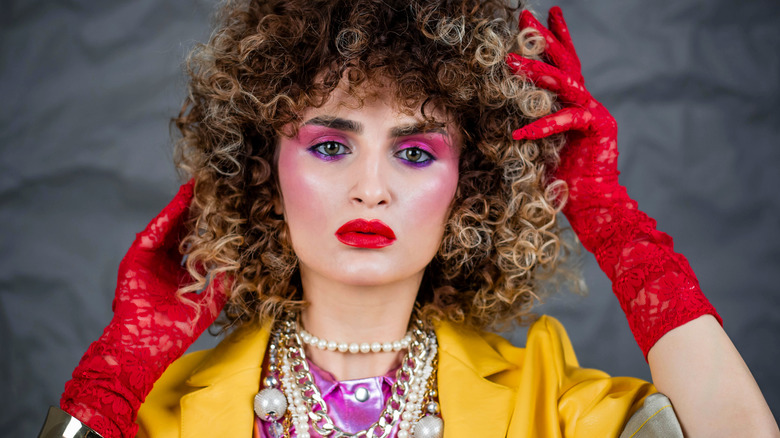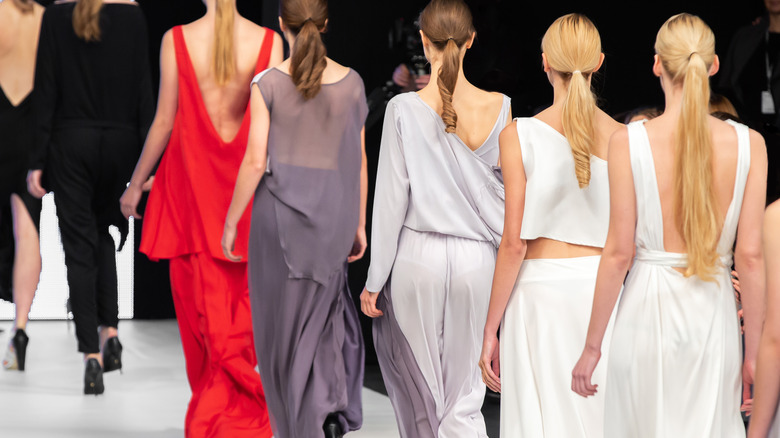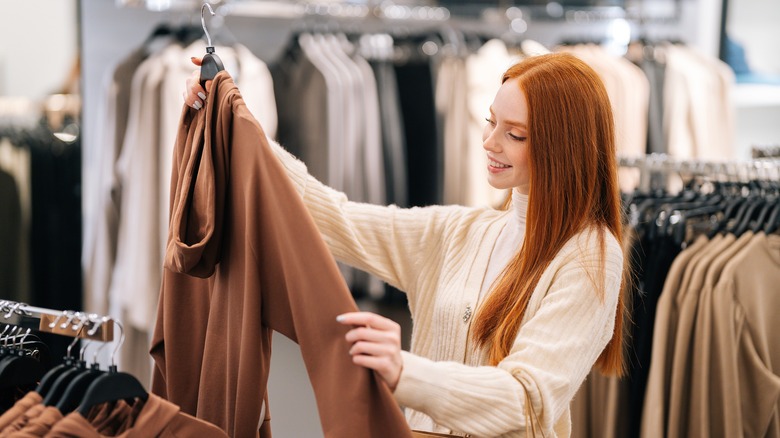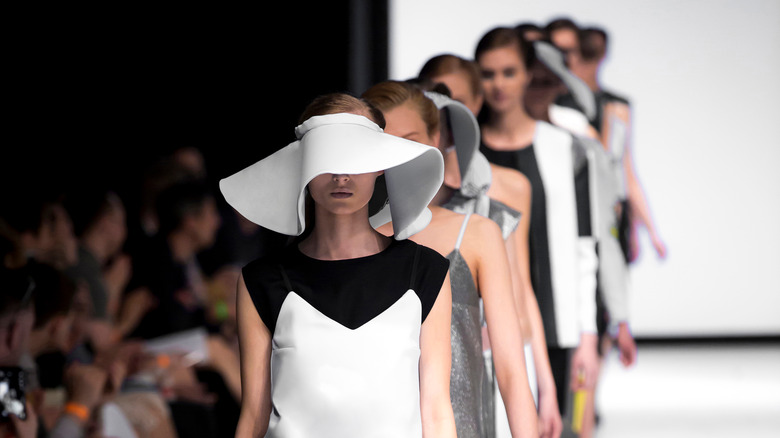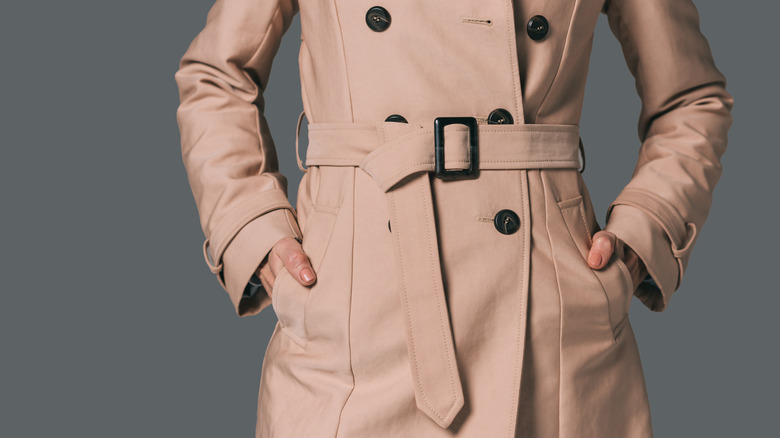What All The Buzziest Words In Fashion Really Mean
It's hard to keep up with changes in language. Even if you have Urban Dictionary bookmarked on your phone and memorize both the Merriam-Webster and Oxford word of the year each year, it's impossible to have a solid grasp on every buzzword, especially when you factor in each industry's own lexicon.
Instead of attempting to master the ever-changing linguistic landscape as a whole, we suggest narrowing your focus to one or two areas of interest. And if fashion is your interest, you've come to the right place — and you've also picked a great lane.
Unlike pop culture, these buzzwords remain in the conversation for years at a time, and committing them to memory will allow you to engage with even the most erudite fashionistas. Get a pencil and paper ready (or just save this list), and take lots of notes. Here's what all the buzziest words in fashion really mean.
Vintage
With the renewed widespread focus on eco-friendliness, a certain buzzword has gained popularity: vintage. Vintage refers to clothing, shoes, or accessories that are decades old, typically produced between 20 and 100 years ago. A vintage item could be a skirt that your mom wore in high school or a pair of Daisy Dukes that you found at a secondhand shop. As long as it was initially manufactured within the correct time frame, it counts as vintage.
Vintage is not to be confused with retro. Though close, there is a distinction between the two. Retro clothing refers to articles that are indicative of the time period in which they were popular, but that doesn't necessarily mean the pieces are vintage. In fact, retro pieces can be newly made with the styles of the past in mind (think poodle skirts in the '50s or bell-bottom jeans in the '70s). A vintage piece has time on its side — it was produced at least 20 years ago.
If you're on the hunt for vintage pieces, they're easy to find. Ask a relative who's saved pieces from their youth if you can raid their closet or visit a secondhand store and scour the racks. Plenty of stores, especially in urban areas, specialize in selling vintage clothing. But if you're not close to one, you can purchase vintage items online, too. Buying vintage is a great way to practice sustainability in shopping (more on that next), and it's a way to potentially find designer pieces if that's what you're after.
Sustainable
If there's any buzzword in fashion that's buzzier than sustainable, we'd like to know what it is. Experts constantly urge us to shop sustainably, but what exactly does that mean? How do we go about doing that? Sustainable clothing is clothing that is made and sold in an eco-friendly way — and according to Earth Day, that encompasses the entire "supply chain," starting with fabric. Sustainable fabrics include bamboo, organic cotton, wool, or anything else from the earth.
Continuing on the supply chain, sustainability also refers to how clothing is distributed and consumed. To shop sustainably, purchase in a way that has the lowest carbon footprint. This could mean purchasing items from local vendors or limiting the number of purchases you make. It could also mean buying those aforementioned natural fabrics or purchasing pieces second-hand.
As far as distribution is concerned, some question whether online shopping is sustainable. The good news is there are ways to shop sustainably online. For example, purchase items in bulk instead of buying one at a time. If you're going to shop online, do so instead of in-person rather than in addition to, and be sure to select the slowest shipping time if possible. If you need more guidance, check for certifications on tags from places such as B-Corp or Fair Trade Certified. Those certifications ensure a third party has evaluated the brand's practices to meet sustainability standards.
Ethical
Along the lines of sustainable fashion is ethical fashion, and the two definitions are very close. Many experts consider ethical fashion to encompass sustainable fashion, but for explanation's sake, we're going to separate the two. As noted, sustainable fashion refers to the environment: Is what you're purchasing made and distributed in an eco-friendly way? Ethical fashion refers to the humanity of fashion: Is what you're purchasing made and distributed in a humane way?
Ethical fashion especially regards those who are manufacturing the goods. Are the employees old enough to work legally? Are they being paid fairly? Are their working conditions safe and comfortable? Are they working reasonable hours and given ample breaks? As co-founder of Fashion Revolution, Orsola de Castro says best, "Demand quality, not just in the products you buy, but in the life of the person who made it" (via Earth.org).
Long ago, it was difficult to know with certainty whether a brand was ethical or not, but with the internet and social media, it's a little bit easier to tell. Most brands will include a statement on their websites or social media pages about their commitment to ethical fashion. If you're not sold on the statement, you can investigate further by researching where the brand's clothing is made. You can also look for any of those previously-mentioned certifications, as many of them evaluate brands for ethical practices in addition to sustainable practices.
Natural
Even if you know nothing about the fashion industry, natural is a word you can likely define with little context. It refers to a few different things. First, natural is an aesthetic. It's a style that emphasizes natural lines and colors. Think soft lines and nothing too harsh. Think beiges, taupes, browns, creams, and ivories. If there is a brighter color, it's usually muted, like navy blue or military green. Natural also refers to fabrics used, and in this regard, it's synonymous with organic. We're talking cotton, linen, and wool. If you can find it in nature, it fits the bill.
Natural can have a third regard. While it's more prominent in the beauty space, it's relevant to your overall look. Natural also refers to how you apply (or don't apply) makeup. In this context, natural is the opposite of the glamorous aesthetic. It's a more fresh-faced, no-makeup look meant to accentuate your natural features, and it often goes hand-in-hand with a natural clothing style. It can also refer to how you style (or don't style) your hair; all these aspects work together to create your aesthetic.
Synthetic
The opposite of natural is synthetic. Synthetic refers to fabrics that are manmade and artificial (and there are tons of them). Examples of synthetic materials include nylon, polyester, neoprene, spandex, and many more. If you're wearing it to work out, it's likely synthetic. If it claims it's water-wicking, it's likely synthetic. If it makes noise while you walk, it's likely synthetic. If you look at your tags, there's a good chance you'll see the piece is made with a synthetic material.
Even if it's mostly cotton, a bit of it might be made from polyester because many pieces in circulation today are made from a blend of natural and synthetic materials — and it's caused a big stir. Environmental experts are worried about the long-term effects synthetic clothing material might have on the planet as it's become its own category of pollution.
"This is the microplastic pollution that we don't talk about as much because it's unseen, but these microfibers are everywhere," Sarah-Jeanne Royer, an environmental expert, told NBC. "We've sampled them at the North Pole, in Antarctica, at the top of mountains, and even at the bottom of the Mariana Trench — everywhere in the world."
Upcycling
If you're on the fashion side of TikTok, you've almost certainly seen a creator or two documenting themself upcycling or taking a piece and repurposing it to wear it again. Upcycling can be done in a variety of ways and with about any piece imaginable.
One example is painting an old purse that you've had for years — think the Birkin bag Kanye West had daughter North West paint on for Kim Kardashian years ago (the bag doesn't have to be Hermès, though). Another example would be taking a piece that your grandparent wore and redesigning it to give it a modern look, like Tess in "27 Dresses" reusing her mother's wedding gown (except using most of the fabric and not just a few scraps on new material).
One of the best things about upcycling is that it can be done by amateurs and professionals alike. Designers for brand names are increasingly in the practice of reusing old materials for their new designs. While some might see this as recycling, the difference is that the old materials are not being turned into new materials. They're simply being repurposed for a new use. Many practices in the fashion industry are suspect, but upcycling is universally regarded as positive. It's good for the environment and an excellent way for individuals to practice creativity and display their personal style.
Transparency
Transparency has been part of the zeitgeist for years now, and it's permeated nearly every aspect of society. The public has been calling on politicians and the government to be more transparent, as well as celebrities, athletes, and other people of influence when it comes to what they promote and how they live their lives. But people want transparency in business, too, and that includes the fashion industry.
Transparency refers to brands being open and honest about their business policies and practices, particularly regarding ethics and sustainability. The public wants to know where their clothing is coming from and how it's made, and they expect brands to share this information of their own volition. As noted before, many brands have taken to sharing their policies, practices, and missions on their websites and social media pages in an effort to practice transparency. Because of this, if you are wondering whether one of your favorite brands is transparent, the best thing to do is look at their website.
Some CEOs and creative directors have also made statements in certain publications. Some have even included those statements on their personal social media pages, especially if they've come under fire for unethical or unsustainable practices. Be sure to check clothing tags, too, as they often share careful pieces of information regarding transparency, such as where the item was manufactured.
Trends
There are food trends, word trends, TikTok trends — and then there are fashion trends. Fashion trends are looks and pieces that are popular for a period of time that is typically short-lived. Trendy pieces are the opposite of timeless pieces (the ones that will never go out of style). Because of their ephemeral nature, trends become indicative of specific time periods. Think low-rise jeans in the early aughts or leg warmers in the '80s. Trendy pieces are just future retro pieces. They can come from celebrities and influencers, but they also often originate on the runway.
If you want to participate in trends, there are several routes you can take. You could invest in one piece that marries multiple trends, like a jacket made from a trendy material in an in-vogue colorway. You could also purchase a couple of different pieces at lower price points to participate in a few different trends you like. Or, forego buying any new pieces and wear what makes you feel good — a look that's always in style. But if you do splurge on a piece that's super trendy, keep it. As history tells us, eventually, that piece will come back in style. Trends have a way of recycling.
Couture
If you're highly in tune with the world of runways or red carpets, you've heard the word couture. Unlike some fashion buzzwords, though, couture isn't one that can just be thrown around. It can only be used to describe very specific pieces. Couture means custom-made. We typically only hear the word on the runway and red carpet events because these pieces are not mass-produced — they're highly exclusive. We also only hear the word in these places because couture pieces can be incredibly expensive. And even if you have enough money to purchase something couture, you might not be able to access one because you either don't have the proper connections or only a limited number of items were created.
Under the umbrella of couture is another definition: haute couture. This is an even more exclusive definition, and as CNN notes, is a strict "legally protected term." To achieve this status, a fashion house must meet certain criteria. Think of haute couture the way you would champagne. Sparkling wine can only be sold as "champagne" if it's from the Champagne region of France. Clothing can only be considered haute couture if the fashion house has a studio in Paris with a certain number of employees and shows a certain number of original pieces in each season's collection.
Fit
For years and years, fit has only meant one thing in fashion. As a stylist for Stitch Fix says, "Fit refers to how clothes fit the body — words like tight, structured and loose describe fit, while style refers to the way the item is made ..." It's an important part of fashion, and we hear and read it often, thanks to online shopping and influencers.
To aid online shoppers, many websites include fit guides to inform buyers how an item will sit on their body since they won't be trying on the article prior to purchasing. You'll also hear influencers mention that something fits true to size or recommend you to size up or down, referring to whether the item fits tighter, looser, or as expected.
Another definition of the word fit has emerged in recent years. To many, fit is a slang term or abbreviation for the word outfit. If you've seen an influencer post a TikTok (or you heard your friend or family member watching one), perhaps you've heard the term "fit check." This means the person in the video walks the audience through each part of their outfit, often noting where the item is from.
Season
In fashion, the word season does not simply refer to the time of year. It's related, but it's a bit nuanced, especially with regard to the runway. The runway splits its collections into seasons which denote the time of year the clothing is meant to be worn. Unlike traditional seasons, however, fashion seasons are combined. There won't be a spring collection, a summer collection, a fall collection, and a winter collection. Instead, they'll be combined into spring/summer and fall/winter.
To confuse people even more, these seasons are shown at fashion week ahead of time. While it does make sense — buyers want to see what designers have planned so that they can prepare their inventory and know what is going to be trendy in the upcoming months — it is a little bit of whiplash to see warm weather clothing being shown at a time when it's cold outside and vice versa.
The seasons don't end at spring/summer and fall/winter, though. There are also resort and pre-collections. Resort used to refer to clothing you'd wear on vacation, but now the pieces are more versatile. Resort and pre-collections aren't as popular on the runway, but they are popular among consumers as they consist of more classic pieces, or items that the masses wear in everyday life.
Investment
Some see real estate as an investment, while others see a Balmain blazer as one. And while you probably won't get the same resale value in a Balmain blazer as you would from a house, it certainly is an investment piece in the fashion world. In fashion, an investment is a purchase that typically costs a little bit more than you would spend on a regular item, but it's one that you'll be wearing either a lot or for many years. Investment purchases are typically pieces that have staying power — excellent basics and fashion staples that'll always be fashionable rather than trendy items that might come back in style in a couple of decades.
Many stylists suggest building your wardrobe around investment pieces and allocating a smaller amount of money for trendy pieces. This practice allows you to maintain a core sense of style while trying trends that catch your eye. Investment pieces range from sleek trench coats and little black dresses to well-fitted trousers and versatile cashmere sweaters. They can include clothing, shoes, bags, sunglasses, jewelry, and more. If it's a piece you had to save for and intend to keep for your progeny, it's an investment piece. An investment piece isn't something you purchase often, but it's a purchase that will serve you well for years to come.
